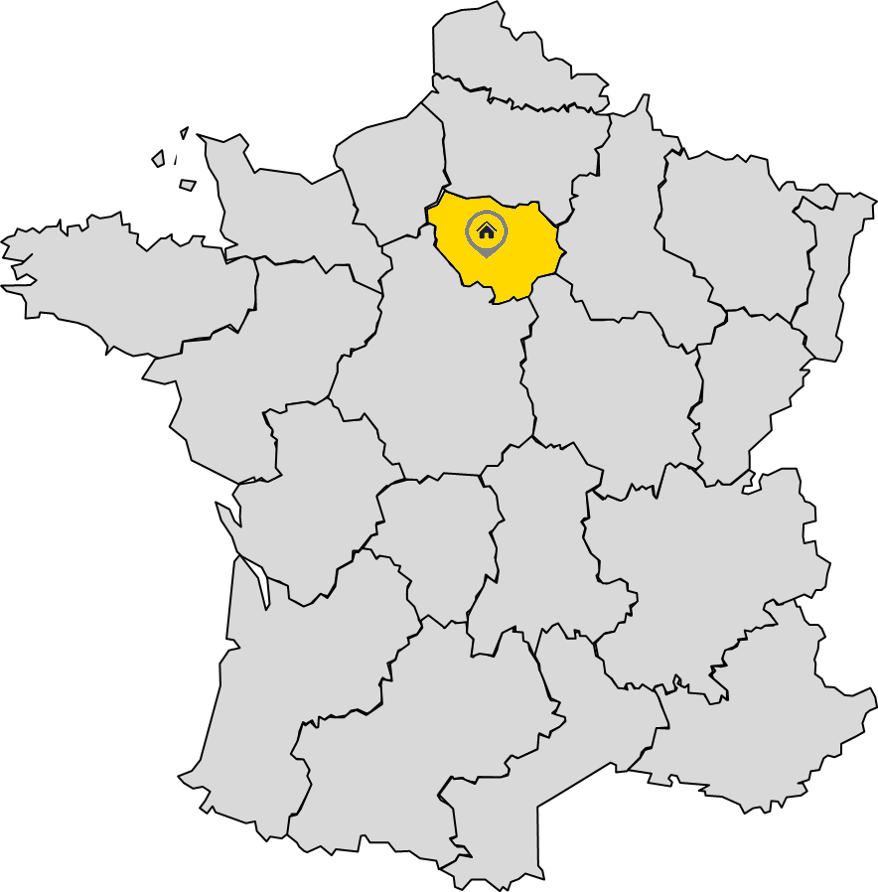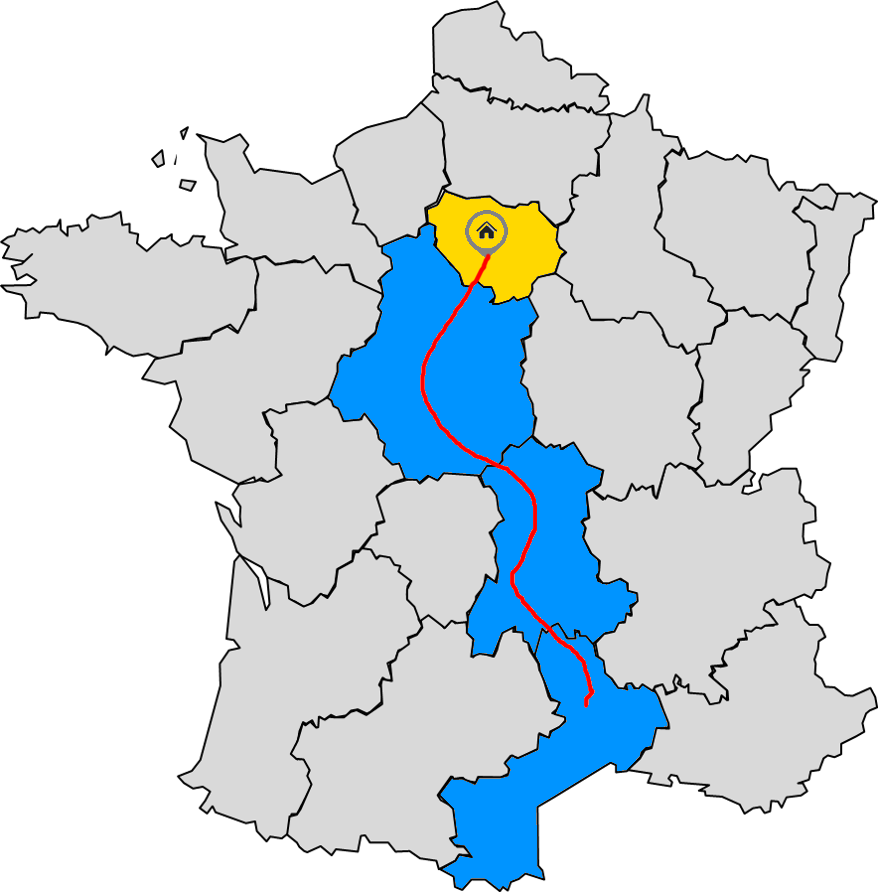Offline map setup
This guide expands upon the basic map configuration setup explained in the Offline map quickstart. It provides additional use cases and more detailed explanations of the various configurations.
In this guide you will see how to set up the geopolitical view, configure automatic map updates, and monitor offline map events. The code snippets in this guide will reuse the examples from the Offline map quickstart.
Configuring geopolitical view
Boundary disputes and unsettled land claims exist between nations. These issues can lead to government prohibition of maps and devices that deviate from the local interpretation of the situation.
The parameter geopoliticalView can be provided in NdsStoreConfiguration to specify which view on disputed areas should be used:
1val ndsStoreConfig =2 NdsStoreConfiguration(3 ndsStorePath = mapDir,4 keystorePath = keystorePath,5 accessPermit = NdsStoreAccessPermit.MapLicense("YOUR_MAP_LICENSE"),6 geopoliticalView = "NLD", // Netherlands' view7 )
The international geopolitical view is used if no national view is provided or if no geopolitical view is defined in the map for the given nation.
Configuring offline map updates
To keep the offline maps up-to-date, TomTom supports over the air (OTA) updates. OTA updates use an internet connection. Since this connection can be metered and thus potentially cost the end-user money, keeping offline maps fresh must be managed. Our SDK provides two options to manage the updates to the offline maps: automatic or manual. These options can work in parallel. The SDK provides the tools needed to configure and adjust the trade-offs to your specific use cases.
Through the NdsStoreUpdaterConfiguration, you can configure the update parameters.
By default, the SDK uses the TomTom production update server. However, this can be configured to any update server. If the server requires an API key, this must be provided in the configuration.
1val customServerUpdateConfig: NdsStoreUpdaterConfiguration =2 defaultUpdateConfig.copy(3 updateServerUri = Uri.parse("https://YOUR_SERVER_URI"),4 updateServerApiKey = "YOUR_TOMTOM_API_KEY",5 )
Configuring automatic map updates
Automatic map updates leverage the user’s location and planned route to automatically control which map regions are kept up-to-date. The map regions that are more likely to be traversed by a user in a driving session are often referred to as relevant map regions. If the relevant regions are not in the offline map, they are added. If they are already present, they will be updated with the latest available data. The SDK identifies the relevant regions and checks if new data is available for them. Any automatic updates are executed in the background.
The 'AllRegions' configuration class allows you to set parameters for automatic updates across all regions. The RelevantRegions configuration class lets you configure automatic updates for relevant regions. The RegionsAlongRoute configuration class lets you configure automatic updates for regions along the route.
The relevant map regions can be selected as follows.
|
|
To enable the relevant map regions update based on the current location, set the parameter relevantRegions in AutomaticNdsStoreUpdaterConfiguration.
Additionally, the radius of the relevant regions and the update interval can be customized. For instance, checking for map updates every hour within a 10-kilometer radius of the current location:
1val relevantRegionUpdateConfig: NdsStoreUpdaterConfiguration =2 defaultUpdateConfig.copy(3 automaticUpdates = AutomaticNdsStoreUpdaterConfiguration(4 relevantRegions =5 RelevantRegions(6 radius = Distance.kilometers(10.0),7 updateInterval = 60.minutes,8 ),9 ),10 )
|
|
To configure the relevant map regions along the route, set the parameter regionsAlongRoute in AutomaticNdsStoreUpdaterConfiguration. Additionally, the radius around the route can be specified. For example at 5 km:
1val alongRouteUpdateConfig: NdsStoreUpdaterConfiguration =2 defaultUpdateConfig.copy(3 automaticUpdates = AutomaticNdsStoreUpdaterConfiguration(4 relevantRegions = RelevantRegions(radius = Distance.kilometers(5.0)),5 regionsAlongRoute = RegionsAlongRoute(radius = Distance.kilometers(5.0)),6 ),7 )
The relevant map regions are updated with no restrictions on connectivity type - meaning that they will also download data on metered network connections (such as mobile data).
NOTE: Configuring a larger radius results in more map regions being considered for updates. Updating more regions consequently results in an increase in network data consumption and an increase in the disk space usage by the offline map. This configuration must be tuned based on the needs of the end users.
- In addition to the relevant map regions options, automatic map updates can also be configured to keep all map regions up-to-date.
That can be enabled as part of the configuration:
1val allRegionsUpdateConfig: NdsStoreUpdaterConfiguration =2 defaultUpdateConfig.copy(3 automaticUpdates = AutomaticNdsStoreUpdaterConfiguration(allRegions = AllRegions()),4 )
In this case, all the map regions in the offline map are considered for updates in no particular order. This type of automatic map updates is currently restricted to run only on unmetered network connections (such as wireless networks).
NOTE: Because all regions that are available for the offline map will be installed and updated, this configuration will significantly impact the data consumption and the disk size of the offline map.
Limiting use of expensive network connections
When using automatic map updates around the current position and/or along the route, the use of a metered network connection can be limited. A metered network connection is assumed to be expensive, in the sense that someone pays for the data transferred over it. The platform determines which connection is considered to be metered. In the context of mobile phone usage, mobile data is considered metered, wheras Wi-Fi is not.
There are three possible settings for the use of metered network connections:
- Always allow metered connections (this is the default).
- Never allow metered connections.
- Dependent on the age of each map region, allow metered connections for that region.
The age-dependent setting allows map regions to be updated over metered connections if the timestamp of their data is older than a specified Duration. This timestamp is the time when the map data was compiled.
To configure this, set the networkConnectivity parameter for the RelevantRegions and/or RegionsAlongRoute configurations.
1val relevantRegionUpdateConfig: NdsStoreUpdaterConfiguration =2 defaultUpdateConfig.copy(3 automaticUpdates = AutomaticNdsStoreUpdaterConfiguration(4 relevantRegions =5 RelevantRegions(6 radius = Distance.kilometers(50.0),7 updateInterval = 30.minutes,8 networkConnectivity = NetworkConnectivityConfiguration(183.days),9 ),10 ),11 )
The NetworkConnectivityConfiguration has two constructors. One that takes a Boolean to set it to always or never allow metered connections, and one that takes a Duration to allow metered connections for map regions older than the given Duration.
NOTE: When using the age-dependent setting, it is strongly recommended to choose an age that is at least twice the expected update frequency of the project. When the age is insufficient, the feature will not work. At the moment that new map updates are available, the existing data will already be considered too old. With quarterly updates, for example, an age of 6 months to 1 year is recommended.
Updating current position and active route
To ensure that the NdsStoreUpdater can identify the relevant map regions, you need to update the current position or the active route for the NdsStoreUpdater.
- For relevant regions update around the current position, use the
updatePositionAPI to update the current position. - For relevant regions update along the route, use the
updateActiveRouteAPI to update the active route.
You can get or subscribe to the current location via LocationProvider. To set up the LocationProvider, see the Location Provider Quickstart.
1locationProvider.addOnLocationUpdateListener {2 ndsStoreUpdater.updatePosition(it.position)3}4locationProvider.enable()
Limiting the map size
There is a significant amount of data in a modern offline map and automatically installing new map regions will consume additional disk space. In order to limit this, you can specify a maximum size of the offline map. If it is not specified, the offline map could use all available disk space. That is acceptable if the offline map is on a separate partition, but if other data is stored on the same partition as the offline map, it is recommended to set this limit.
The parameter mapDiskUsageQuota can be provided in NdsStoreUpdaterConfiguration to specify this limit.
1val diskQuotaUpdateConfig: NdsStoreUpdaterConfiguration =2 defaultUpdateConfig.copy(3 mapDiskUsageQuota = Memory.gibibytes(5),4 )
NOTE: This quota only limits the size of the map itself. It does not limit the size of the downloaded update files needed for the update process. But since the downloaded update files are removed after they are applied, the update files are not expected to contribute significantly to the long term disk usage.
During the automatic update of relevant regions or regions along the route, it is possible to automatically remove less useful regions from the offline map if the quota is exceeded or the disk is full.
The parameter dataRemovalStrategy can be set in the AutomaticNdsStoreUpdaterConfiguration to specify what to do when running out of disk space or exceeding the set quota. There are two options:
1val relevantRegionUpdateConfig: NdsStoreUpdaterConfiguration =2 defaultUpdateConfig.copy(3 automaticUpdates = AutomaticNdsStoreUpdaterConfiguration(4 relevantRegions =5 RelevantRegions(6 radius = Distance.kilometers(50.0),7 updateInterval = 30.minutes,8 ),9 dataRemovalStrategy = DataRemovalStrategy.CompleteRemoval,10 ),11 )
Disabled- no regions are removed and the update fails. This is the default.CompleteRemoval- removes map regions one by one until there is enough space for the update or no more regions can be removed.
A region is a candidate for removal when it is not a relevant region (close to the current position) or a region along the current route. The candidates are sorted on two criteria, in order of importance:
- The version of the region. Regions with lower versions are considered first, as they are not recently updated and are therefore less relevant.
- The distance from the current position. Farther regions are considered first.
NOTE: When automatically updating all regions, there can be no automatic removal of regions, since all regions are being updated.
Enabling/disabling map updates
Use the setUpdatesEnabled API to enable/disable updates. When updates are disabled during ongoing map operations, the operations are interrupted.
ndsStoreUpdater.setUpdatesEnabled(true)
Next steps
Since you have learned about offline maps and how to set them up, here are recommendations for the next steps:

